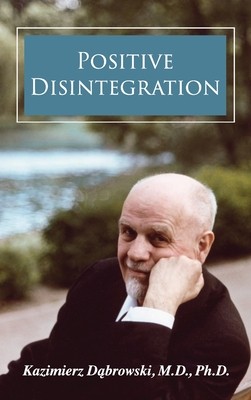
- We will send in 10–14 business days.
- Author: Kazimierz Dabrowski
- Publisher: Maurice Bassett
- ISBN-10: 1600251277
- ISBN-13: 9781600251276
- Format: 15.2 x 22.9 x 1 cm, kieti viršeliai
- Language: English
- SAVE -10% with code: EXTRA
Reviews
Description
Kazimierz Dabrowski refers to his view of personality development as the theory of positive disintegration. He defines disintegration as disharmony within the individual and in his adaptation to the external environment. Anxiety, psychoneurosis, and psychosis are symptoms of disintegration. In general, disintegration refers to involution, psychopathology, and retrogression to a lower level of psychic functioning. Integration is the opposite: evolution, psychic health, and adequate adaptation, both within the self and to the environment. Dabrowski postulates a developmental instinct-that is, a tendency of man to evolve from lower to higher levels of personality. He regards personality as primarily developing through dissatisfaction with, and fragmentation of, the existing psychic structure-a period of disintegration-and finally a secondary integration at a higher level. Dabrowski feels that no growth takes place without previous disintegration. He regards symptoms of anxiety, psychoneurosis, and even some symptoms of psychosis as the signs of the disintegration stage of this evolution, and therefore not always pathological.
EXTRA 10 % discount with code: EXTRA
The promotion ends in 22d.23:42:06
The discount code is valid when purchasing from 10 €. Discounts do not stack.
- Author: Kazimierz Dabrowski
- Publisher: Maurice Bassett
- ISBN-10: 1600251277
- ISBN-13: 9781600251276
- Format: 15.2 x 22.9 x 1 cm, kieti viršeliai
- Language: English English
Kazimierz Dabrowski refers to his view of personality development as the theory of positive disintegration. He defines disintegration as disharmony within the individual and in his adaptation to the external environment. Anxiety, psychoneurosis, and psychosis are symptoms of disintegration. In general, disintegration refers to involution, psychopathology, and retrogression to a lower level of psychic functioning. Integration is the opposite: evolution, psychic health, and adequate adaptation, both within the self and to the environment. Dabrowski postulates a developmental instinct-that is, a tendency of man to evolve from lower to higher levels of personality. He regards personality as primarily developing through dissatisfaction with, and fragmentation of, the existing psychic structure-a period of disintegration-and finally a secondary integration at a higher level. Dabrowski feels that no growth takes place without previous disintegration. He regards symptoms of anxiety, psychoneurosis, and even some symptoms of psychosis as the signs of the disintegration stage of this evolution, and therefore not always pathological.


Reviews